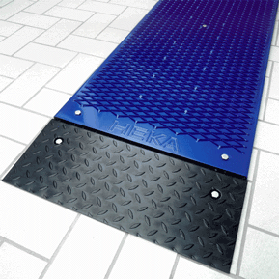TECHNOLOGY: HEKA HIGH-SPEED SENSORS = STRAIN GAUGES
State-of-the art high-speed sensors for all electronically controlled car systems,
permanent all-wheel drive vehicles, brake assistant, electronic parking brake EPB,
low-chassis sports cars, double-axle trailers, motorbikes, tractors...
It is the high-speed sensors' high resolution / data rate which makes it possible to
record testing values for brakes and suspension parts simultaneously.
|
|
fast |
|
precise |
|
dynamic |
|
pluggable |
HEKA high-speed sensors fit all HEKA testing lanes from 1990 until today!
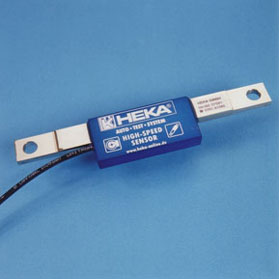
_
What makes them so different?
Our new high-speed sensors are a small technological miracle.
We will let you take a look at the special features hidden under its blue casing:
Tension rod of heat-treated special steel
Strain
gauge application
Signal
amplifier with integrated circuits
Special Teflon cable with plug
Pluggable as a complete unit
Backward compatible to the year 1990
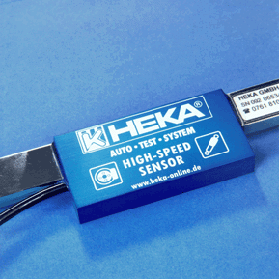
_
Measuring amplifier with integrated circuits in SMD construction
In order to record the mechanic tension, a strain-gauge amplifier is required.
An analogue-to-digital converter processes the measuring values
for the microprocessor accordingly.
Supply voltage: 12V
Power
consumption of a high-speed sensor: 15mA
With
reverse voltage protection
Interference suppression pursuant to EMC directive
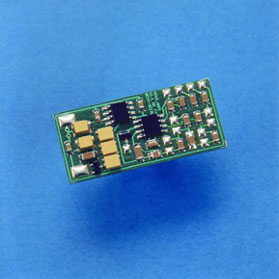
_
What is a strain gauge?
A strain gauge measures the emerging tensile forces.
In a full-bridge circuit with temperature compensation, the strain gauges are transferred to the tension rod. The application of the strain gauge measuring field takes place in a clean-room production environment.
At 1,000 Newton (100 kg), the strain is about 1 millionth meter.
1 millionth meter equals 1 micrometer [µm], 100 micrometer correspond to the thickness of a hair.
In 1952, England was the hour of birth of the foil strain gauge, when a sensor geometry was etched on a metal foil laminated on plastic film.
The electro-mechanical phenomena:
A deformation of the sensor geometry causes a change in resistance.
Nowadays, the strain gauge technology is applied in all areas of technology and
science: in aerospace, the vehicle industry, in medical technology...
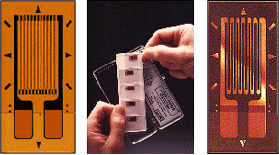
_
How does a strain gauge work?
A strain gauge is actually a force transducer especially suited to measure
tensile forces and basically works like a tension spring (see images)
The special thing about it is that the tensile motion or expansion is not visible
with the naked eye, thus there are no mechanically moving parts,
and it practically works wear-free
High-speed sensor in unloaded condition. Zero point = 0 Newton.
High-speed sensor in loaded condition. Power flow = 1000 Newton.
HEKA High-Speed sensors have a measuring range of 0 - 10,000 Newton.
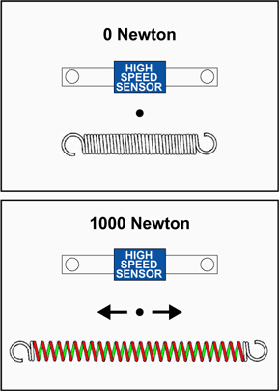
_
The history of HEKA strain gauges = Experience and know-how
The development from the simple strain gauge to today's high-speed sensor:
1975-1981 Hydraulic testing system, mechanical hydraulic cylinder.
1982-1987 Fully electronic testing system, strain gauge with round shell in silver.
1988-1996 Strain gauge with round shell in red and aluminium tin with
separate amplifier.
1997-2001 Strain gauge with angular shell in blue, with integrated amplifier.
(see picture)
2002-Heute... High-speed senor: the latest sensor technology (See picture above)
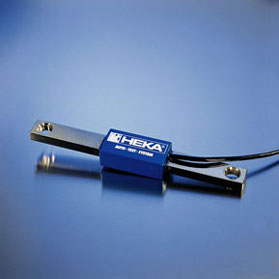
Installation of the high-speed sensor
Installation example of the high-speed sensor for the 4-cm testing lane version.
Screw loose the HEKA plate brake tester (in traffic blue)
with deep-offset combination wrench SW 17.
High-speed sensor, installed, in driving direction.
High-speed sensor with cable cover.
High-speed sensor, remove cable cover.
High-speed sensor, disconnect plug connection. Pull cotter bolt.
Now you have got the sensor in your hand and you can mail it to us.
See customer service and routine check.
After return from the HEKA customer service and the routine check,
proceed in reverse order:
Please insert the high-speed sensor, establish plug connection.
Check test plate clearance of 2/10 mm with feeler gauge and adjust, if required.
Finally, screw on the traffic-blue brake testing plate.
Now your HEKA testing lane is ready for operation again.
_
Installation of the side-slip potentiometer
Installation instructions: side-slip potentiometer for the 4-cm version.
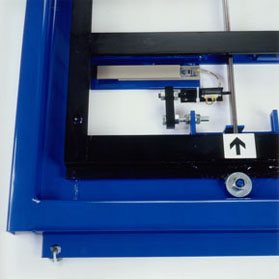
_
HEKA side-slip conversion table from mm
degree/minute
m/km
What is the rim size of the inspected vehicle in inches?
Side-slip measurement: how many mm were measured? Only consider the 1/10-mm digit.
Read the value from the column: degree and minutes.
The fields highlighted in yellow correspond to the Auto data list.
Read the value from the column: m/km.
|
HEKA side-slip
conversion table from mm
|
|||||||||||||||||
| Rim | 13 ´´ | 14 ´´ | 15 ´´ | 16 ´´ | 17 ´´ | 18 ´´ | 20 ´´ | 22.5 ´´ |
|
m/km | |||||||
|
size
|
|||||||||||||||||
|
|
|||||||||||||||||
| Side-slip | 0.31 | 0.34 | 0.37 | 0.39 | 0.42 | 0.44 | 0.48 | 0.54 | 0° | 3´ |
1 |
||||||
|
in mm |
0.52 | 0.56 | 0.62 | 0.65 | 0.70 | 0.73 | 0.80 | 0.90 | 0° | 5´ | |||||||
| 0.63 | 0.72 | 0.75 | 0.78 | 0.84 | 0.87 | 0.96 | 1.08 | 0° | 6´ | 2 | |||||||
| 1.05 | 1.12 | 1.25 | 1.30 | 1.40 | 1.45 | 1.60 | 1.80 | 0° | 10´ | 3 | |||||||
| 1.31 | 1.46 | 1.62 | 1.69 | 1.82 | 1.89 | 2.08 | 2.34 | 0° | 13´ | 4 | |||||||
| 1.51 | 1.68 | 1.87 | 1.95 | 2.10 | 2.18 | 2.40 | 2.70 | 0° | 15´ | ||||||||
| 1.79 | 1.91 | 2.13 | 2.21 | 2.38 | 2.47 | 2.72 | 3.06 | 0° | 17´ | 5 | |||||||
| 2.10 | 2.25 | 2.50 | 2.60 | 2.80 | 2.91 | 3.20 |
3.60 |
0° | 20´ | 6 | |||||||
| 2.54 | 2.71 | 3.00 | 3.12 | 3.12 | 3.48 | 3.84 | 4.37 | 0° | 24´ | 7 | |||||||
| 2.65 | 2.85 | 3.12 | 3.25 | 3.45 | 3.63 | 4.00 | 4.55 | 0° | 25´ | ||||||||
| 2.84 | 3.06 | 3.38 | 3.51 | 3.69 | 3.92 | 4.32 | 4.95 | 0° | 27´ | 8 | |||||||
| 3.15 | 3.14 | 3.75 | 3.90 | 4.10 | 4.36 | 4.80 | 5.50 | 0° | 30´ | 9 | |||||||
| 3.57 | 3.86 | 4.25 | 4.42 | 4.66 | 4.94 | 5.44 | 6.22 | 0° | 34´ | 10 | |||||||
| 3.67 | 3.97 | 4.37 | 4.55 | 4.80 | 5.09 | 5.60 | 6.40 | 0° | 35´ | ||||||||
| 3.89 | 4.21 | 4.63 | 4.81 | 5.09 | 5.38 | 5.92 | 6.75 | 0° | 37´ | 11 | |||||||
| 4.20 | 4.55 | 5.00 | 5.20 | 5.50 | 5.82 | 6.40 | 7.30 | 0° | 40´ | ||||||||
| 4.30 | 4.66 | 5.10 | 5.33 | 5.65 | 5.96 | 6.56 | 7.47 | 0° | 41´ |
12 |
|||||||
| 4.62 | 5.01 | 5.48 | 5.72 | 6.06 | 6.39 | 7.04 | 8.02 | 0° | 44´ | 13 | |||||||
| 4.72 | 5.12 | 5.60 | 5.85 | 6.20 | 6.54 | 7.20 | 8.20 | 0° | 45´ | ||||||||
| 5.04 | 5.47 | 5.95 | 6.24 | 6.62 | 6.98 | 7.68 | 8.74 | 0° | 48´ | 14 | |||||||
| 5.25 | 5.70 | 6.20 | 6.50 | 6.90 | 7.27 | 8.00 | 9.10 | 0° | 50´ | ||||||||
| 5.35 | 5.80 | 6.35 | 6.63 | 7.05 | 7.42 | 7.60 | 9.32 | 0° | 51´ | 15 | |||||||
| 5.67 | 6.14 | 6.73 | 7.02 | 7.46 | 7.85 | 8.05 | 9.87 | 0° | 54´ | 16 | |||||||
| 5.77 | 6.25 | 6.85 | 7.15 | 7.60 | 8.00 | 8.80 | 10.05 | 0° | 55´ | ||||||||
| 6.09 | 6.57 | 7.25 | 7.54 | 8.02 | 8.43 | 9.28 | 10.63 | 0° | 58´ | 17 | |||||||
| 6.30 | 6.80 | 7.50 | 7.80 | 8.30 | 8.72 | 9.60 | 11.00 | 1° | 0´ | ||||||||
| 6.83 | 7.37 | 8.13 | 8.45 | 8.99 | 9.45 | 10.40 | 11.92 | 1° | 1´ | 18 | |||||||
|
|
|||||||||||||||||
_
HIGH-COLOUR DIGITAL DISPLAY with traffic light
in 16:9 wide-screen format
Attractive LED digital large-scale display in 16:9 wide-screen format, W 80 x H 36 x D 3,5 cm
Modern design, looks great in the entrance of your service shop, catches your customers' eyes!
Multi-functional display for brake Newton x 10, suspension and toe
on front and rear axle 1/10 mm
6 x
red LED module 100 mm displaying measured values
35-dot
2-colour LED Dot Matrix Module 100 mm traffic light
Traffic light for safety red / yellow / green analysis for automatic test
process...
Readability up to a 30-m distance
Casing
in traffic blue, powder-coated, 3.5 centimeters flat
Front
glass of synthetic anti-reflection material with attractively designed
imprint
Space-saving ceiling suspension
Low-energy costs thanks to maximum electricity consumption of 50 watts!
Digital display, rear side:
Port for 20-m display cable to E-BOX 3001,
connection socket for power supply 15V to regular electric outlet,
ceiling suspension with 1-m cable duct
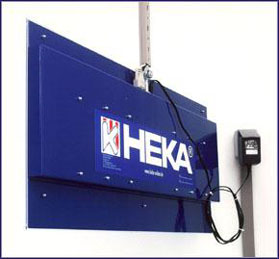
_
HEKA Assist A7.2 CD-ROM Windows® software
+ wire connection, E-BOX
Display presentation on your own PC operating system from Windows® 7 / 8 / 10.
Test
values displayed numerically + graphically, readability up to a 10-m
distance
(picture to the right)
Practical example
of Windows® software + wire connection (see picture below, left:
1. E-BOX 2. Your PC 3. Your printer for the HEKA printout 4. Your printer for invoice)
HEKA 3001 CD-ROM
Assist A7.2 Program-CD für ihren PC.
PC system requirements / CD installation as PDF file, open here!
_
E-BOX 3001
example for wall mounting (See picture bottom right)
_
E-BOX 3001
Connection diagrams for all UNIVERS models (see picture series below)
For cabling diagrams, please see testing lane diagrams under “products” as PDF.
E-BOX 3001 connection diagrams can be enlarged by clicking on them!
_
_
Production = Made in Germany
We are proud to be one of those few testing lane manufacturers whose production site is located in Germany. We monitor all processes ourselves: from the manufacturing to the shipping to the customer's site.

Only Thyssen steel fine sheets are processed for the HEKA testing lanes.
We already place great importance on the used materials at the time of purchase:
they have to meet our quality standards in dimension accuracy and workmanship.
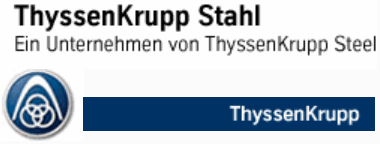
_
As a qualified expert in its field, our supplier, with its sophisticated machinery, guarantees us our superior HEKA quality standards pursuant to ISO 9001.
Computer-controlled processing center with:
CNC-controlled plate shears for the sheet metal cutting
With this machine, the HEKA up- and down-ramps as well as the toe segments
are cut to size.
Then, these parts are bent on a 320-ton CNC press brake.
Burr removing takes place automatically.
Electronically controlled drilling and threading/tapping machines are used.
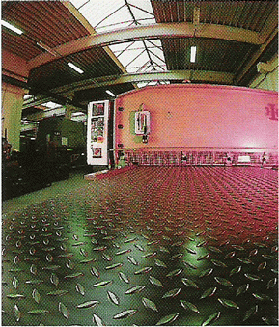
High-precision welding robots for rational serial production
It guarantees highest dimensional accuracy for the HEKA brake and toe segments
as well as other precision parts. During the production, a consistent process control
is performed in accordance to AQL.
In its operation, the QA department follows the ISO 9001 standard:
"Quality cannot be established through final inspection alone,
quality is something you produce."
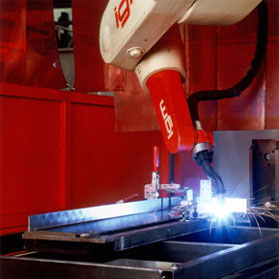
_
Production: Cathodic Dip-paint Coating (CDC) based on a black epoxy resin
Cathodic dip-paint coatings belong to the standards in automotive manufacture,
especially when a high corrosion protection is required.
Even hollow cavities are perfectly coated = frame parts / wheel cases / rims / oil trays / etc.
Combined with a ten-step pre-treatment, it offers an optimal corrosion protection
for the HEKA upper and lower frame parts as well as the HEKA testing lane ramps.
The coating is applied through a dipping process based on 400 Volt DC.
During an electrochemical procedure, the paint separates into a water-insoluble,
adherent film and settles on top of the part's surface.
During a further work step, the parts are / baked for 36 minutes
at a 210° C recirculation air temperature
.
Comparison between a zinc surface and a CDC surface:
A study conducted by BASF Lacke+Farben AG confirms that while zinc coating is a
corrosion layer (sacrificial anode) which consumes itself and disappears after some
years (depending on climate, salt, air), CDC consists of a chemically resistant system
(withstands acid, lye, salt, and air) in which the plating thickness is not stripped.
Consequentially, HEKA uses only CDC coatings for its testing lanes.
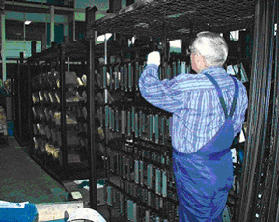
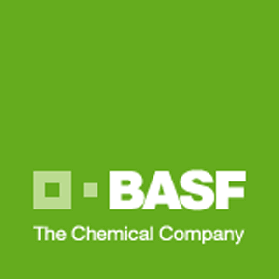
_
Production: Powder coating based on a blue polyester coating powder
Electrostatic powder coatings also belong to the standards in automotive manufacture in the area of top coating of the skin and in construction for façade and Windows®,
HEKA applies it for its traffic-blue brake and toe plates in order to ensure
a superior corrosion protection as well as a modern design.
Also in electrostatic powder coating the material surfaces undergo an 11-step fully
automatic pre-treatment from degreasing to phosphating, several rinsing and drying
cycles, to powder coating, and finally to baking--a process during which the parts are
baked at temperature of 180°C.
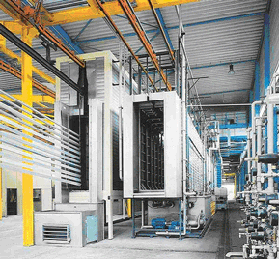
Production: Pre-assembly and final inspection
of the HEKA testing lane at the Freiburg manufacturing site for
shipping to customers around the globe.
You can always recognise the original by the HEKA imprint on the brake plate.
